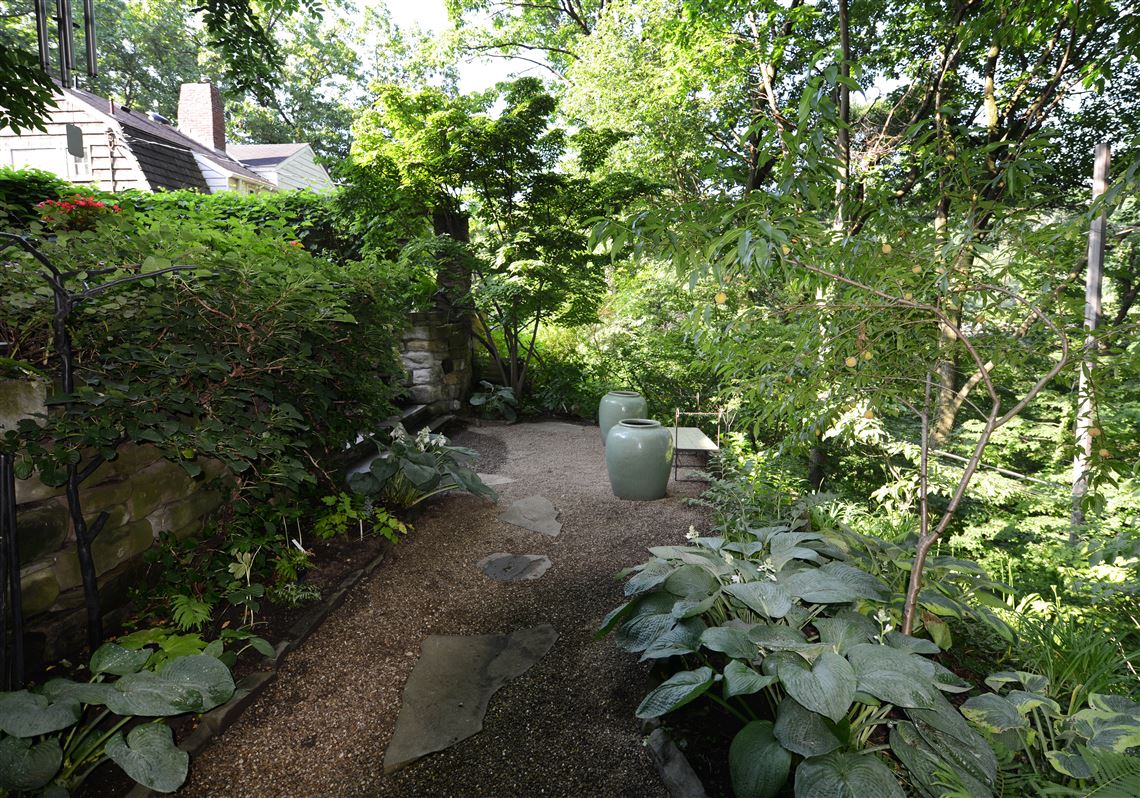I grew up with peaches in Johnston, S.C. — the peach capital of the world. We have the best peaches in the Southeast. (Yes, better than Georgia!)
My father, who has worked in peach orchards for almost 30 years, taught me how to take care of trees from beginning to end. It’s a labor of love, and mostly praying for rain.
Johnston is in the Piedmont region of South Carolina. This means we have a hilly terrain with red clay-loam soil. It’s very different from Western Pennsylvania, so I spoke with Curt Kaelin, owner of Kaelin Farm Market in Franklin Park and a second-generation peach farmer, to find out how to grow a peach tree here.
Before planting, have the soil tested to determine if your pH levels and soil composition are a good match for peaches. Most farmers recommend pH levels between 6.20 and 6.50. If yours is lower, add lime.
Avoid heavy red clay areas because they don’t drain well. Choose a spot that gets at least four hours of sunlight per day. Avoid shady areas.
In South Carolina, we don’t grow our peach trees from pits because there is too much that can go wrong. Animals dig them up or the pits might end up being duds. Start with a bare-root tree from a fruit tree nursery.
When purchasing, pay special attention to the roots. If the roots have been cut or have dried out, they will not grow. I usually try to get a tree that is about 4-6 months old.
Sandy Feather, an educator with the Penn State Extension office and former garden columnist for the Post-Gazette, recommends Hale Haven cultivars because they can endure intense winters and late cold snaps. ‘Redhaven,’ ‘Glohaven’ and ‘Cresthaven’ are all recommended, with ‘Redhaven’ being the most popular. Peach trees are self-pollinating so you don’t need buy two to pollinate one another.
Most farmers plant trees in mid- to late April and no later than the first week in May. The tree is still dormant and that’s important. When the tree wakes up determines when it will start fruit production.
Before planting, look right above the roots for a raised notch or bump on the trunk. This mark is your reference point. You want this notch to be 2 inches above the ground when the tree is planted.
Dig a hole that is 1½ feet wide and 1½-2 feet deep. Spread the roots out in every direction but don’t force them. Backfill the soil you removed in the hole tightly, making sure it remains 2 inches below the notch.
The base of the tree will be vulnerable to sun scald or herbicides, so protect it by painting the bottom 6-8 inches with white latex paint.
Do not worry about mulching the tree yet. Water it with about 4 gallons of water for the first few days. After that, water only when the soil is dry. To check, poke your finger about 3 inches deep. If it is dry at that depth, water deeply.
About 2½ months after planting, you’ll want to fertilize the tree. Fertilizers should have an even amount of nitrogen, phosphorus and potassium; a 12-12-12 ratio is recommended.
The first time, apply ¾ of a pound of fertilizer in a wide band about 10 inches away from the base of the tree. The second time, apply the same amount but 18 inches away from the trunk. Make sure the fertilizer does not touch the trunk or it could burn the tree.
Three months after planting, cut the main trunk to a height of 20-24 inches with a pair of pruning shears. Leave four or five branches at the base of the tree. Now trim the remaining branches to about ¾ of their original length, making diagonal cuts on the branches.You’re reinforcing the branches so they can hold more fruit later.
Prune the tree the following March or April depending on whether the previous winter started late or early. Prune too early and the tree is vulnerable to a cold snap. Prune too late and the fruit will be smaller.
Now the tree will have a lot of smaller branches shooting off from the larger base branches. Prune to leave 3-5 scaffold branches at the base. The branches don’t have to be at the exact same height but try to make sure they form an X when viewed from above.
Trim back the smaller branches on the scaffold branches. Each scaffold branch should have 20-25 smaller branches.
When the tree blooms in the spring, pinch off all of the flowers the first year. The branches are still too weak to support any peaches.
The second year of pruning is different: You are pruning to create the main fruit-bearing branches and to give the tree a wider shape. Leave 200-300 blooms. Once the blooms fall, you will get small peaches; leave 100-150 peaches evenly distrusted across the branches.
Fertilization also changes. Add ¾ of a pound of fertilizer for each year until the tree is 5 years old. Fertilize in early spring before blooms and early summer before peach production.
In the third year, the tree becomes an adult and bears full-size fruit. Prune only to maintain its shape. Watering is more important. Overwatering will dilute the peaches’ flavor and underwatering will result in undersized fruit. Water only if the land is extremely dry and peaches are visible.
Arturo Pineda: apineda@post-gazette.com or 412-263-1448
First Published: June 23, 2017, 4:00 a.m.

















